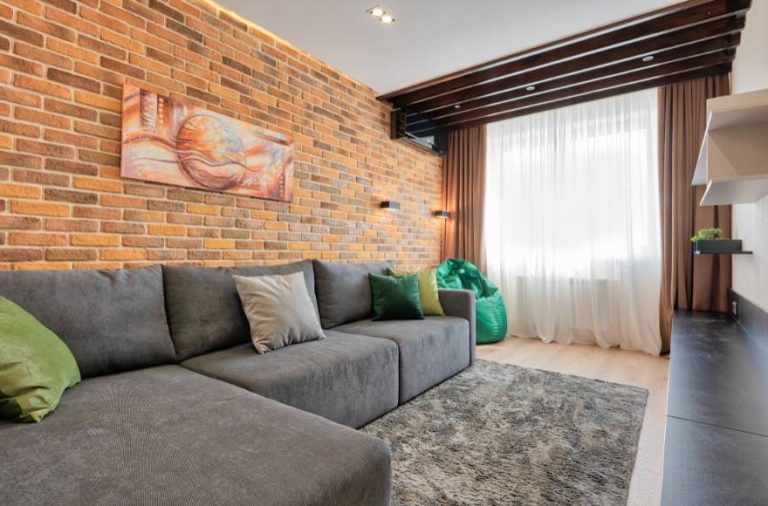How to Mix and Match Furniture for Living Room?
Transform your living room into a stylish sanctuary by mastering the art of mixing and matching furniture.
From defining your unique style to creating a harmonious blend of colors and textures, discover the key tips to achieve a cohesive and balanced look that will elevate your space to new heights of design sophistication.
how to mix and match furniture for living room
To mix and match furniture for a living room, start by defining your preferred style to guide your choices.
Choose a dominant piece that acts as the focal point and complements the room’s size and style.
Create contrast by pairing it with complementary yet contrasting pieces.
Stick to a color palette using the 60-30-10 rule.
Experiment with mixing light and dark colors for visual interest.
Don’t worry about matching all furniture styles; eclectic mixes can be creative and appealing.
Matching the tone of the sofa with other elements like rugs can create a cohesive look.
Mixing different styles of chairs, tables, and cabinets can add texture and visual interest while maintaining harmony and balance in the room.
Variety in tones, textures, and wood tones is encouraged for a personalized and interesting living space.
Key Points:
- Define preferred style to guide choices
- Choose dominant piece as focal point
- Create contrast with complementary yet contrasting pieces
- Stick to color palette using 60-30-10 rule
- Experiment with mixing light and dark colors
- Don’t worry about matching all furniture styles
Check this out:
1. Define Your Preferred Style For Harmony
When it comes to mixing and matching furniture for a living room, the first step is to define your preferred style. Whether you lean towards modern, traditional, eclectic, or another design aesthetic, having a clear style in mind will guide your furniture choices. This will help you avoid conflicting styles and create a cohesive look in your living space. Consider the overall mood you want to achieve and the existing elements in the room to ensure that your furniture selections align with your chosen style.
It’s important to note that while defining your preferred style is crucial, you can still incorporate elements from different styles to add interest and personality to the space. Mixing styles can result in a dynamic and visually engaging room, so don’t be afraid to experiment with different combinations. The key is to find a balance between diverse styles that work harmoniously together to create a well-curated look for your living room.
Incorporating pieces that reflect your personality and resonate with you will ultimately create a space that feels inviting and authentic. By staying true to your preferred style while being open to mixing elements from various design aesthetics, you can achieve a living room that is both visually stunning and reflective of your personal taste.
- Define your preferred style
- Consider the overall mood
- Mix diverse styles harmoniously
- Incorporate pieces that reflect your personality and resonate with you
2. Choose A Dominant Focal Point
-
In any living room, it’s essential to choose a dominant piece of furniture that acts as the focal point of the space. This can be a large sofa, a statement coffee table, a striking entertainment center, or any other substantial piece that anchors the room. The dominant piece should match the size and style of the room to create a cohesive look and draw the eye towards it as the centerpiece of the space.
-
Selecting a dominant focal point provides a sense of structure and organization to the room while establishing a visual hierarchy. This piece sets the tone for the rest of the furniture selections and helps guide the overall layout and design scheme. By strategically placing this key element in the room, you can create a cohesive and impactful living space that feels well-balanced and visually appealing.
-
Once you have chosen your dominant focal point, you can build the rest of the furniture arrangement around it, ensuring that each piece complements and enhances the prominence of the central element. This approach will help create a harmonious flow in the room and showcase the focal point in a way that highlights its importance within the overall design.
3. Create Contrasting Combinations
-
Creating Contrasting Combinations: One way to add interest and depth to your living room design is by creating contrasting combinations when mixing and matching furniture. It’s essential to have a dominant focal point that sets the tone for the space. Incorporating complementary yet contrasting pieces can elevate the overall look and create visual intrigue.
-
Achieving Contrast: Contrast can be achieved through various means, such as mixing different furniture styles, pairing light and dark colors, or combining textures and materials. For example, you can juxtapose a sleek, modern sofa with a vintage-inspired armchair to create a dynamic interplay between contemporary and traditional elements. Similarly, mixing smooth leather upholstery with plush velvet accents can add tactile contrast and visual appeal to the room.
-
Consider Scale and Proportion: When creating contrasting combinations, consider the scale, proportion, and placement of each piece to ensure a harmonious balance in the space. By strategically incorporating pieces that play off each other while maintaining a cohesive design theme, you can achieve a curated and sophisticated look for your living room.
FAQ
Can I mix and match living room furniture?
Yes, you can definitely mix and match living room furniture to create a unique and cohesive look. By combining modern and vintage pieces, you can add depth and character to your living space. Mixing different furniture styles can bring a creative flair to your room and showcase your personal style in an innovative way. Just be sure to find a balance between the pieces to ensure that they complement each other harmoniously. So go ahead and experiment with mixing and matching furniture to create a one-of-a-kind living room that reflects your individuality.
What color furniture goes with everything?
Neutral colors such as beige, gray, black, cream, and brown are versatile and can complement a variety of color schemes and design styles. Their understated hues allow them to easily adapt to different moods and trends, making them a timeless choice for furniture that goes with everything. Whether you prefer a minimalist aesthetic or a more vibrant decor, neutral furniture can seamlessly fit into any space with elegance and sophistication.
How to mix and match colors in a living room?
When mixing and matching colors in a living room, it’s important to follow the 60-30-10 rule of proportion. Choose a dominant color to occupy 60% of the room, typically seen in elements like walls and large furniture pieces. This sets the foundation for the color scheme. Then, select a secondary color to make up 30% of the room, found in items like curtains, accent chairs, or smaller decor pieces. This balance creates harmony and visual interest in the space.
For the final 10% of color, add accents and accessories in a complementary shade that brings everything together. This could be seen in throw pillows, artwork, or other small decorations. By carefully distributing colors according to this guideline, you can create a cohesive and well-designed living room that is visually appealing and balanced.
Is it OK to have furniture that doesn’t match?
Absolutely, it is perfectly fine to have furniture that doesn’t match in your living room! In fact, mixing different styles, textures, and colors can add character and personality to the space. By incorporating a variety of pieces, you can create a visually interesting and eclectic look that reflects your individual style.
Embracing non-matching furniture allows for creative expression and can result in a more dynamic and inviting living room. As long as you maintain some sense of cohesion through complementary elements, such as coordinating colors or themes, having a mix of furniture styles can ultimately create a space that is uniquely yours.
💡 Did You Know?
1. Mixing different furniture styles in a living room can create a unique and eclectic look, but it’s important to maintain a cohesive color scheme to tie everything together.
2. A good rule of thumb when mixing furniture styles is to choose one dominant style as the base, and then incorporate pieces from other styles as accents for added visual interest.
3. To create a harmonious look when mixing furniture, try to incorporate elements of contrast such as pairing sleek, modern furniture with more traditional, ornate pieces.
4. Mixing furniture of varying heights can add depth and visual appeal to a living room, so consider incorporating pieces of different heights like a tall bookcase next to a low-lying sofa.
5. When mixing and matching furniture, don’t be afraid to experiment with different textures and materials to add dimension to the room, such as pairing a leather armchair with a plush velvet couch.

